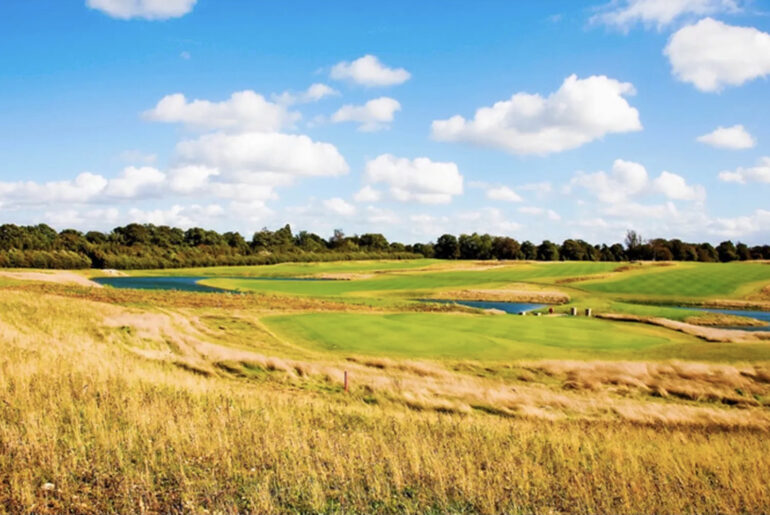Open this photo in gallery:
Ian Andrew’s passion for designing golf courses began as a 13-year-old after watching the Bing Crosby Pro-Am on television.Sarah Espedido/The Globe and Mail
Taylor Pendrith plays it safe off the first tee. The long-hitting Canadian pulls a fairway wood and launches what looks like a perfect drive – until it nestles against the steep face of a bunker.
Strolling down the fairway, Pendrith turns to Ian Andrew, the 59-year-old golf course architect responsible for the newly placed trap. “You did that,” he says, half-laughing.
Andrew grins. Guilty as charged.
Since his renovation of TPC Toronto’s North Course two years ago, Andrew has worried: Would his tweaks be an adequate test for the world’s best? Or would the pros shrug and shoot a 59? Pendrith’s sandy fate during Wednesday’s pro-am offered a reassuring answer.
Pendrith was annoyed. Andrew was thrilled.
Open this photo in gallery:
Taylor Pendrith walks to the 10th green during the first round of the RBC Canadian Open 2025 at TPC Toronto in Osprey Valley.Vaughn Ridley/Getty Images
Nick Taylor leads trio of Canadians playing together at RBC Open
Over the past decade, Andrew has become Canada’s go-to guy for PGA-level renovations, having refreshed three of the last four Canadian Open venues.
It’s a curious line of work. Course designers are part landscaper, part engineer – and part riddler. As he walked the Caledon, Ont., property, Andrew wasn’t just sketching bunkers, he was setting up puzzles for the likes of Rory McIlroy to solve.
The North Course opened in 2001, part of Osprey Valley’s sprawling 54-hole complex conceived by famed architect Doug Carrick. Back then, pros averaged 280 yards off the tee. Now, it’s closer to 300, rendering many courses obsolete.
In 2023, with the possibility of landing the Canadian Open in sight, Osprey Valley president Chris Humeniuk wanted to revamp the original design and tapped Andrew.
“The aha moment came when I said that I didn’t want to build a public course that hosts championship golf, I wanted a championship course that the public can play,” Humeniuk said. “Ian really embraced that vision. He doesn’t get emotionally attached to drawings. He spends a lot of time on site making sure what’s on paper makes sense in time and space.”
It was a homecoming of sorts. Andrew grew up nearby, a typical kid obsessed with brook trout and the Toronto Maple Leafs. But at 13, he fell in love – with Pebble Beach.
Watching the Bing Crosby Pro-Am on TV, he became captivated by the holes themselves. He started sketching courses, memorizing classic layouts and devouring books on design. Family vacations turned into course tours. Barely a teen, he’d already found his calling.
He joined Carrick’s firm in 1989 before going solo in 2005. For years he avoided working on courses designed by Carrick “out of respect.” With Osprey Valley’s North Course, he finally felt comfortable taking on one of his old boss’s works.
“I had a bit of an attachment to the North,” he said. “I did all the greens as part of my role within the original project and I had been involved with quite a bit of the design.”
He wanted to reward boldness. Many of the old fairway bunkers were ornamental, the fairways too generous.
The endless hunt for your next, maybe first, great golf shot
Like a tailor taking in a baggy suit, he narrowed the corridors, set bunkers just past the 300-yard mark and forced players to alternate between fades and draws.
The 15th hole, a short par-4 with a big personality, exemplifies his approach. From a new back tee, a large tree looms along the right edge of a doglegging fairway.
Play it safe with an iron left of the tree, and the fairway’s tilt might kick your ball into the tullies, leaving you with a long approach – and little chance at birdie.
Braver souls might go over the tree and leave a wedge in. The boldest – big hitters with a fade – can aim for the tight gap right of the tree and try to drive the green.
“If you miss that shot and you end up in the woods, that could easily be a six on the scorecard,” Andrew said. “But if you play too passively, you’re essentially playing for par and you may give up a shot to the field. That’s where it gets exciting.”
At the end of his pro-am round, 2023 champion Nick Taylor seemed adequately puzzled by Andrew’s angled fairways. “If you’re missing a lot of fairways, it’ll be tough to make birdies,” he said. “I don’t think it’ll be a shootout by any means, but there’ll be some low scores.”
That’s the kind of line that lets Andrew breathe easy.
Open this photo in gallery:
Mackenzie Hughes of Canada plays a shot on the 10th hole during the first round of the RBC Canadian Open 2025.Vaughn Ridley/Getty Images






